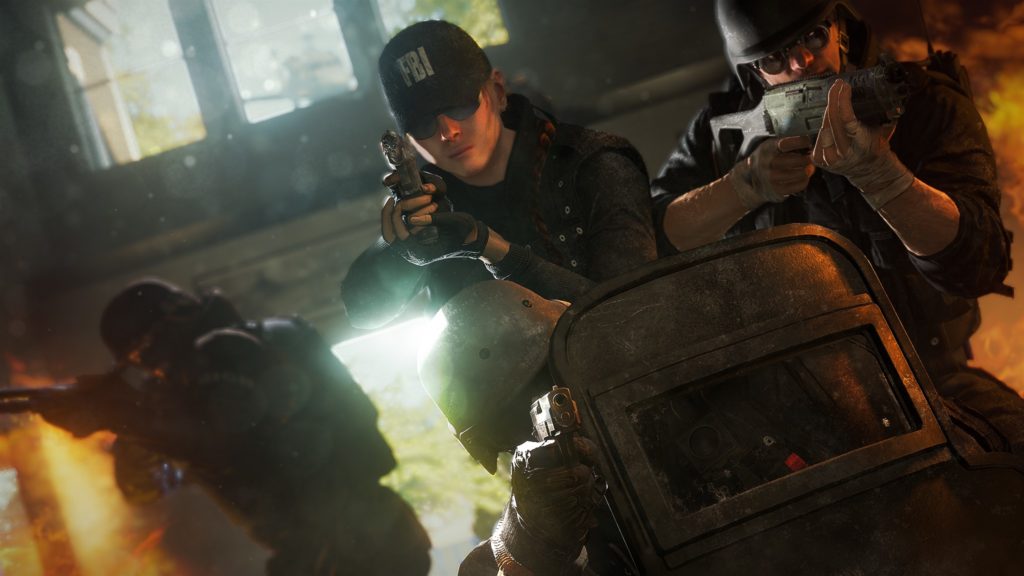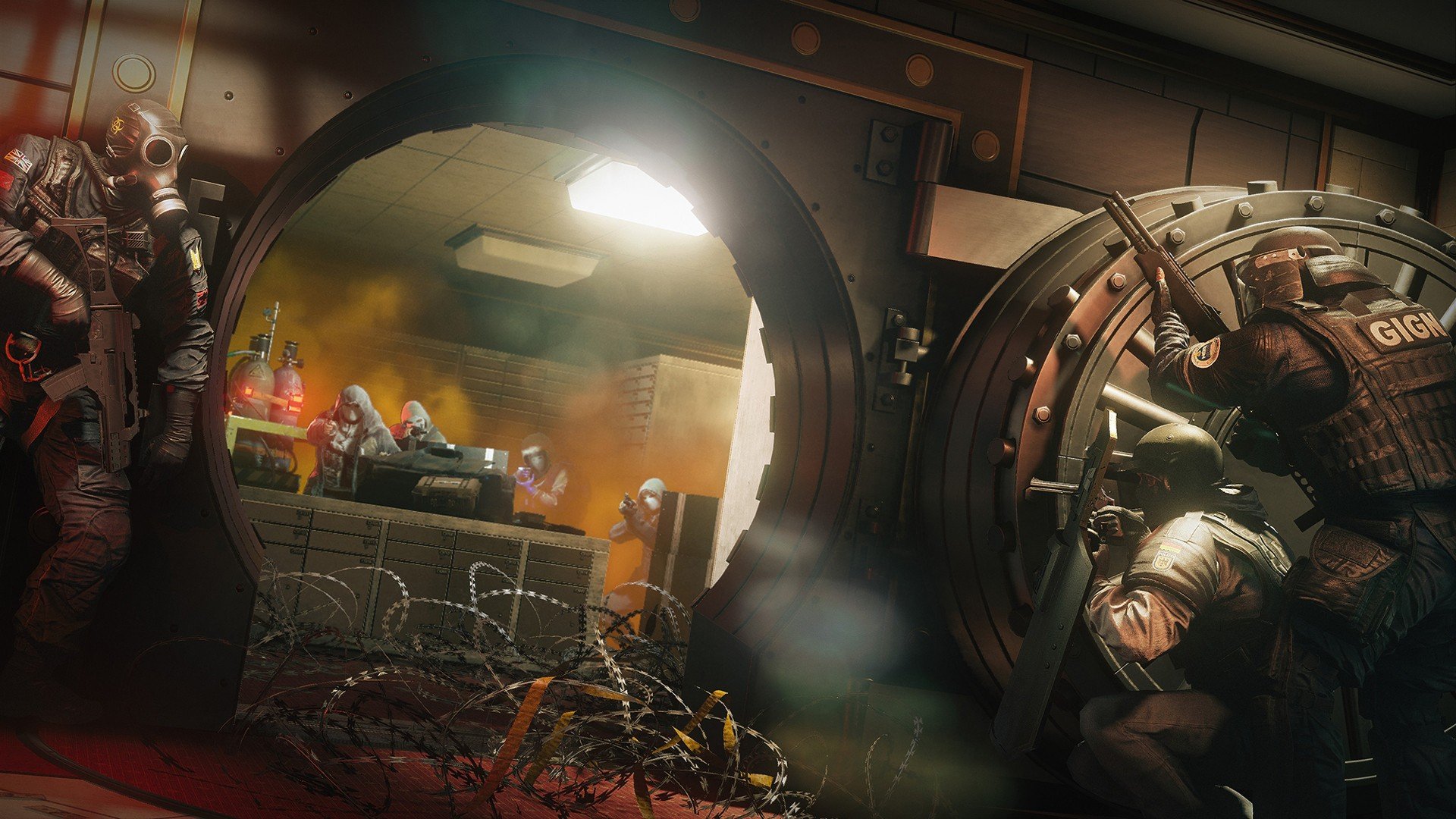Tom Clancy’s Rainbow Six Siege review
Tom Clancy's Rainbow Six Siege is a team game first and foremost. Lone wolves will find themselves quickly overwhelmed and many times end up watching a replay of how the opponent killed them. With such a teamwork focused game, players must pick their Operators in a smart way.In this latest iteration of the Rainbow Six franchise two things immediately stand out, the unique Operators that players can choose from and the destruction of the world which brings creativity in how players attack or defend an objective.

Tom Clancy’s Rainbow Six Siege is a team game first and foremost. Lone wolves will find themselves quickly overwhelmed and many times end up watching a replay of how the opponent killed them. With such a teamwork focused game, players must pick their Operators in a smart way.
In this latest iteration of the Rainbow Six franchise two things immediately stand out, the unique Operators that players can choose from and the destruction of the world which brings creativity in how players attack or defend an objective.
The ability to blow through walls, ceilings, and floors adds a dynamic experience that most games don’t even come close too. But the actual character models in-game, and the scenery in-game could pass for last generation hardware. Granted, there is a lot of destruction in Siege, but the expectations from a major studio working on next generation hardware is that the game would have more detail in it. Outside of the simplistic visuals, the creativity of destruction and breaching is where this game really shines. The shooting mechanic itself feel sluggish and even though it’s a slow-paced game, there’s still a learning curve to it. The game benefits players who set up at a fixed position and wait, but even for attackers who methodically clear rooms and check objectives, there’s little that can be done when an enemy flanks them.

Gamers have come to expect value when spending sixty dollars on a game, and here’s the rub, this game isn’t worth sixty dollars. With no Campaign or single-player story there just isn’t enough content to justify the $60 price tag. It’s more in the line of a forty to fifty dollar game. It’s a good game, but the content is lacking. There are ten single-player Situations which could be considered training missions. Finishing those Situations unlocks a team based mission and then after completing that mission the narrator teases at hunting down those responsible for that attack. It makes it seem like a whole new area will unlock featuring story missions, but that isn’t the case. There was false hope that led to disappointment as the game loaded back up to the home screen.
That leaves Terrorist Hunt and Multiplayer as ways to drive player interaction in the game. Terrorist Hunt is five players matched up against the computer. The regular difficulty is fairly easy, especially for players who go in tactically and have a semi-quick reaction time. After a couple of hours unlocking all of the stars in Situations and a couple more hours playing through Terrorist Hunt, there’s little left to do other than play in Multiplayer which is why players will find most of their time spent in multiplayer.
There are two different types of multiplayer, casual and ranked. Multiplayer is two teams of five fighting against each other in rotating attack and defend roles. There are only three different types of game modes in multiplayer, hostage rescue, bomb defusal, and secure area. These modes are fun, but with only three after time they start to feel repetitive. Casual matches have a good pace to them and they were able to find players and connect to matches fairly quickly.
After a short grind to level 20, Ranked matches open up. Ranked matches build on what are available in casual matches, but they go to first team to four wins, where a team has to win by two, instead of first to three in casual. Also, in Ranked matches players can choose their starting attack and defend locations. There’s also a competitive cool down in Ranked matches if players leave before the match is over. Ranked matches do bring an extra layer to the game, but it wasn’t a game changer. It’s like Casual, but longer to connect to and longer to play in. It doesn’t differentiate itself enough from Casual matches to make an impact.
People still drop out of Ranked matches like they do in Casual, but they aren’t replaced. So a team of four, three, and even two, are left to face off against a full squad of five. It’s great that players who drop get a cool down where they can’t play Ranked for a while, but there needs to be something more in place to help the team of a player who rage quits. Also, for Ranked matches there isn’t a clearly defined ranking system. Going from a Bronze 4 to a Bronze 3 is nice, but it doesn’t signal where players are on the ladder. After getting a rank, there’s nothing to tell players where they are at or what they are striving towards.
Multiplayer is where the Operators shine. The Operators are well-balanced and no single Operator is more powerful than the rest. Each of the five Anti-Terrorist Units, the FBI SWAT, SAS, GIGN, Spetsnaz, and GSG 9, have two Attackers and two Defenders per unit which brings the total number of unlockable Operators to twenty. It gets progressively more expensive to unlock Operators in each unit which forces players to unlock Operators across the board.
This was incredibly smart to do by Ubisoft as every Operator is available to players at the beginning of the game and players can unlock them as they choose. It also creates a great stretch goal for players who want to unlock every operator in the game. For players who jump into casual multiplayer before unlocking an Operator, or run into the problem of somebody taking their only unlocked Operator, they will be a Recruit. Recruits give players access to the game without the special abilities that Operators grant.
Matchmaking is key in a game where multiplayer is the main focus, but unfortunately Siege’s matchmaking was unreliable at times. Most of the time matches connected, but there were times when issues popped up. While matchmaking with a full squad of five the game put two to three players in another match and broke up the squad, and in Ranked play, there were times where it took over ten minutes to get a match connected. For a game where matchmaking is so heavily focused, that’s a real issue.
At its core, Tom Clancy’s Rainbow Six Siege is a fun game of strategy in attacking or defending an objective. The creative approach to these objectives is where this game really shines. Outside of that though, the developers could have done a better job with the visuals, shooting mechanics, and most of all in a multiplayer centered game, matchmaking. Fans of the genre should pick up this game, but gamers who are on the fence might want to wait for it to drop in price.
Score: 7/10
Good. In general, worth picking up if you’re a fan of the genre, but doesn’t do much with their concepts or mechanics. May contain some big caveats.This game was reviewed on a PlayStation 4 console.
